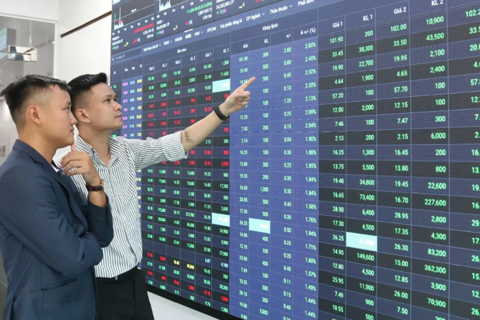Vietnam predicted to be among top 25 global economies by 2038
Vietnam serves as an example of improving its ranking through repositioning in the global value chain, internal reforms, increased labor productivity, and investments in infrastructure.
Vietnam remains the 34th largest economy in 2023 but is projected to rise to 21st in the world by 2038.
| Hanoi from above. Photo: Pham Hung/The Hanoi Times |
The UK-based Center for Economics and Business Research (CEBR), an independent economic forecasting and analysis center with 30 years of experience, assessed in its 14th annual report on global economic prospects.
According to the center’s World Economic League Table (WELT) rankings, Vietnam's economic size is projected to make a significant leap in the next 14 years.
In 2024, Vietnam is expected to rank 33rd in the WELT, moving up one place from last year. The ranking is anticipated to rise swiftly, reaching the 24th position in 2033 before becoming the 21st largest economy in the world by 2038.
Capitalizing on its large and youthful population, Vietnam is poised to surpass many ASEAN countries economically, including Singapore, Thailand, and Malaysia, and aims to become a high-income nation by 2045, according to the CEBR.
Looking back at last year's economic performance, the organization acknowledges Vietnam's robust growth and the maintenance of low inflation.
Official data from the General Statistics Office (GSO) noted the country’s GDP growth increased by 5.05% in 2023, while inflation stood at 3.25%, a remarkable balance between growth and inflation compared to many other countries.
The consumer price index growth in 2023 was also lower than the 10-year average, at 3.8%, providing room for Vietnam's monetary policy management.
Additionally, last year's lower unemployment rate contributed to increased consumer spending, and the government debt-to-GDP ratio is expected to be around 35% in 2023, down about 1.3 percentage points from 2022.
Moreover, Vietnam has benefited from the global shift in supply chains, with the proportion of Vietnamese exports to the US increasing by nearly 2% since the escalation of US-China trade tensions in 2018. This is complemented by strong foreign direct investment (FDI) inflows from other Asian economies, including China.
CEBR forecasts an average annual GDP growth rate of 6.7% for 2024-2028, followed by 6.4% over the subsequent nine years.
Alongside Vietnam, the Philippines is also highlighted as a country with impressive growth potential, projected to reach 23rd by 2038. According to the CEBR, Vietnam and the Philippines are prominent examples of countries expected to improve their rankings through repositioning in the global value chain, internal reforms, increased labor productivity, and investment in infrastructure.












